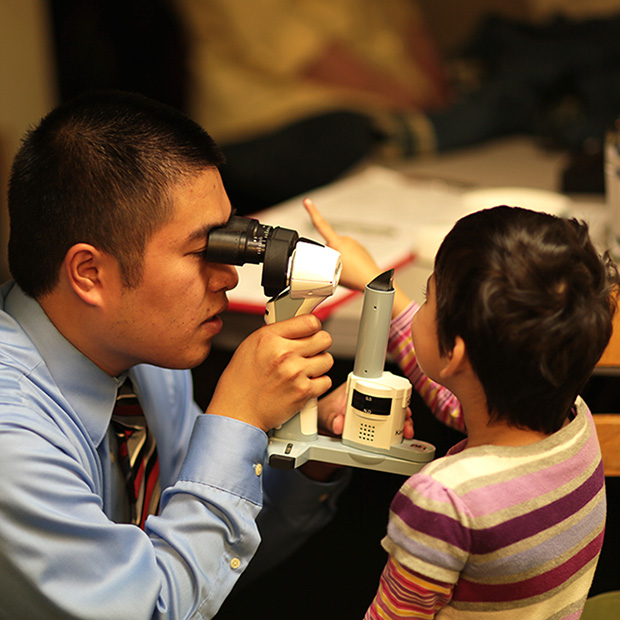Why Does My Child Need An Eye Exam?

The new school year is about to start, and that makes this the perfect time to schedule your child for an eye exam.
Vision is a lot more complicated than simply being able to correctly read off letters on a chart, which is why every child should have a comprehensive eye exam with an optometrist — even if the school nurse already declared them to have 20/20 vision.
More To Good Eyesight Than Visual Acuity
It’s important to test a child’s visual acuity, which is what the big E chart does, but being nearsighted or farsighted are not the only problems they can have with their eyesight. There are plenty of other vision problems that can negatively impact a child’s learning and social skills, but the big E chart doesn’t test for them.
These problems include astigmatism, color blindness, poor hand-eye coordination or visual perception (the brain’s ability to comprehend what the eyes see), and difficulties with the eyes’ ability to work together for tracking, teaming, and focusing. Only a comprehensive eye exam with an optometrist can test for these problems.
Don’t Let Vision Problems Go Undiagnosed
Unfortunately, many children with undiagnosed vision problems can be diagnosed with a learning disability instead. They then get treated for a condition they don’t have, while their vision remains uncorrected. Up to 80 percent of a child’s learning is done visually, so an undiagnosed vision problem is a serious obstacle to their education and development.
The reason vision problems are often misdiagnosed as learning disabilities is that they have many symptoms in common. Imagine having an eye condition that makes it physically uncomfortable to look at words on a page. You’d be fidgety and have trouble concentrating too! Children don’t know how eyesight is supposed to work, so they can’t usually tell their parents and teachers what’s wrong, which makes it even easier to miss the problem.
All of this is why it’s crucial to watch for symptoms such as crossed eyes, a lazy eye, or eyes turned outward, difficulty with reading comprehension, difficulty finishing schoolwork, a short attention span (especially for up-close work), fidgety behavior, frequent headaches, a tendency to cover one eye, and frequent blinking or rubbing of the eyes.
Let’s Get Your Child On Track To Healthy Vision!
We want to make sure no vision problems go undiagnosed for our patients’ children, because we want them to have the visual skills they need to reach their full potential as they grow up! Whether or not you suspect they may have a vision problem, take advantage of the summer break to schedule your child’s eye exam!
